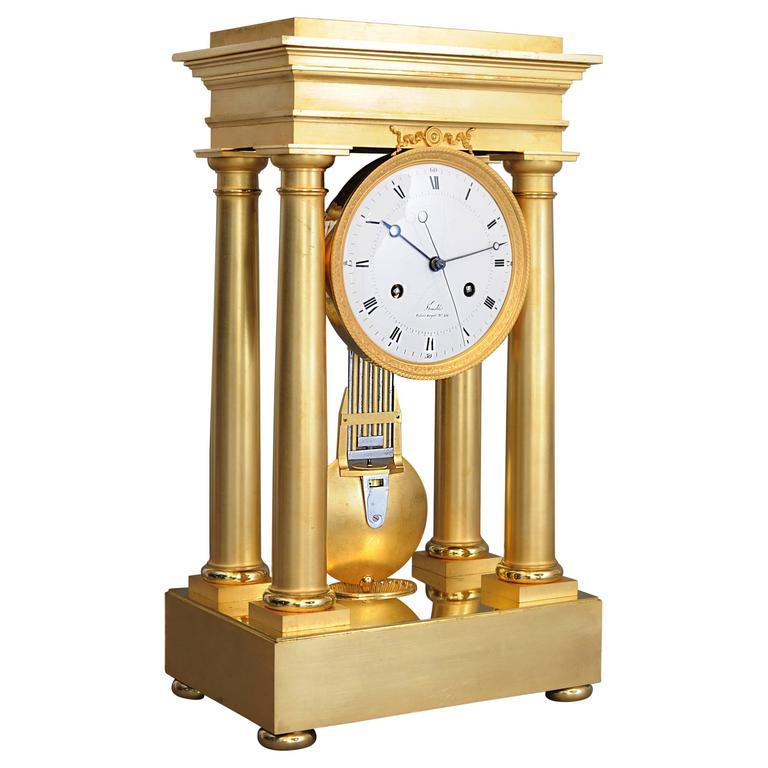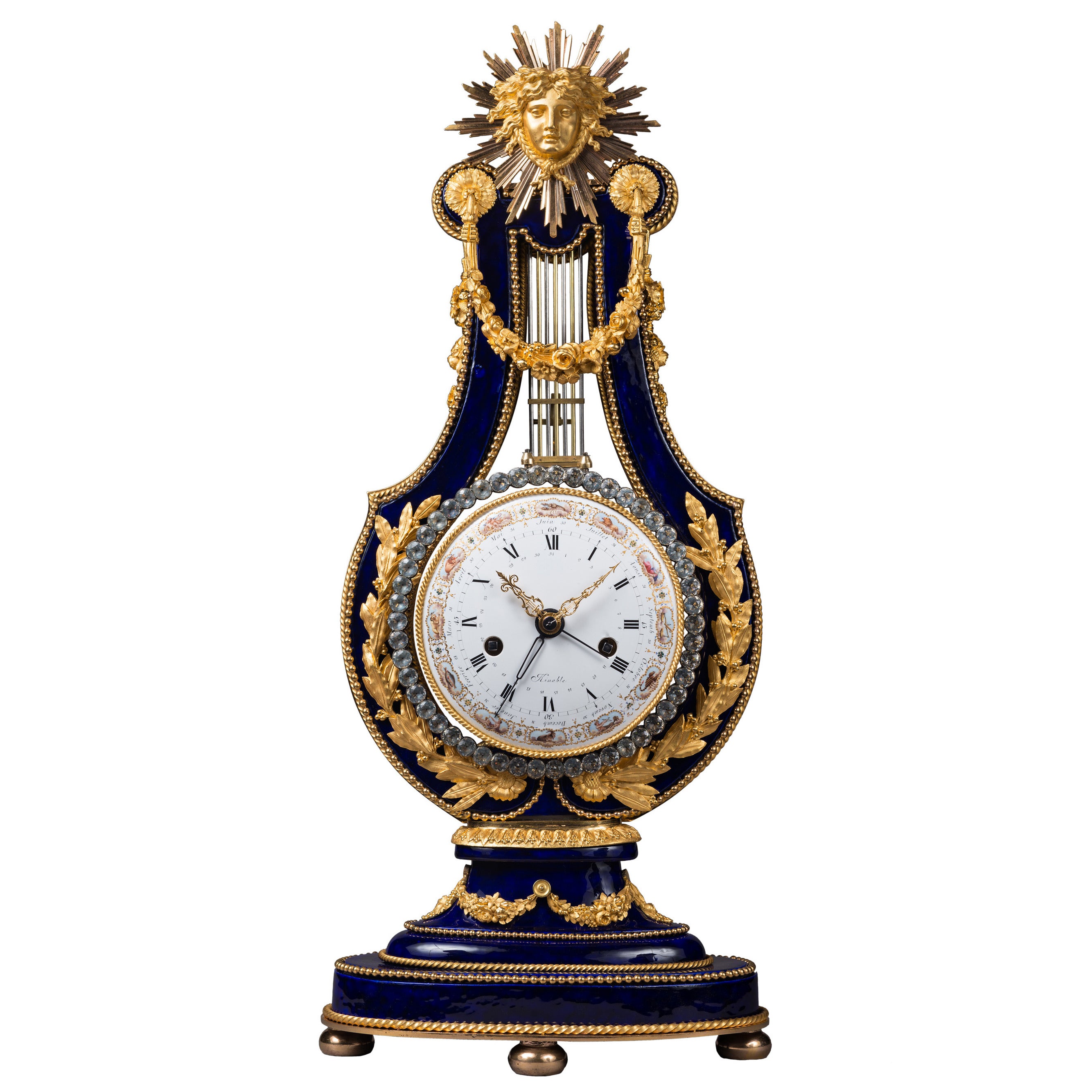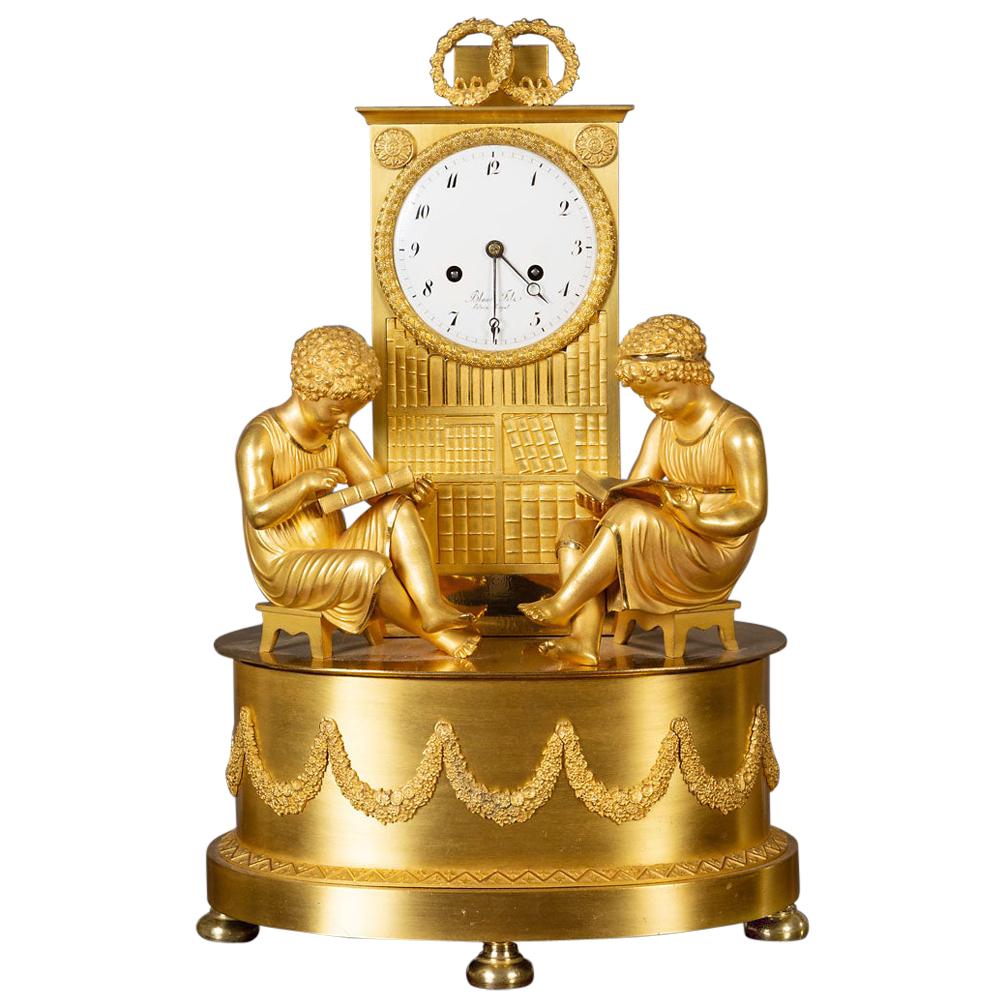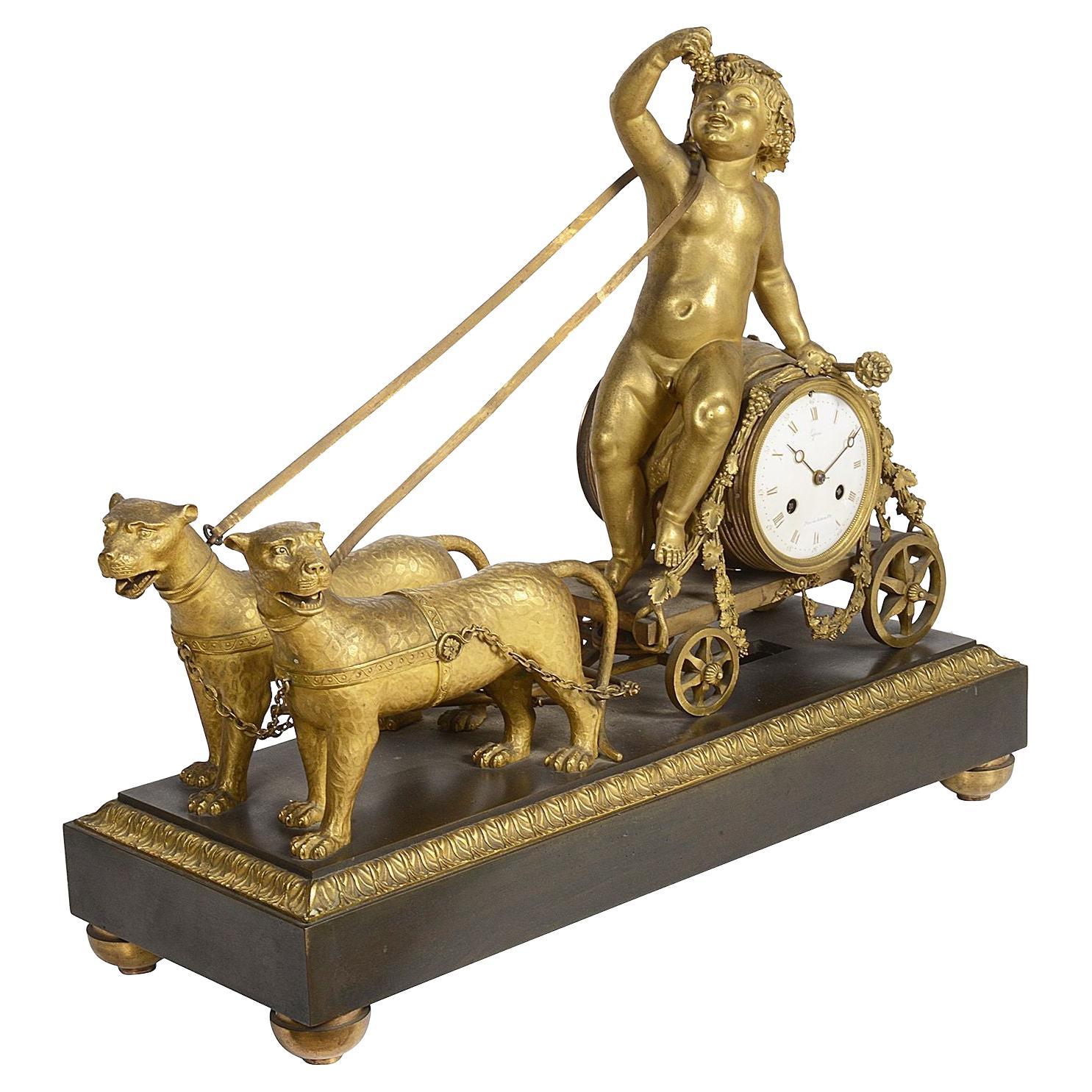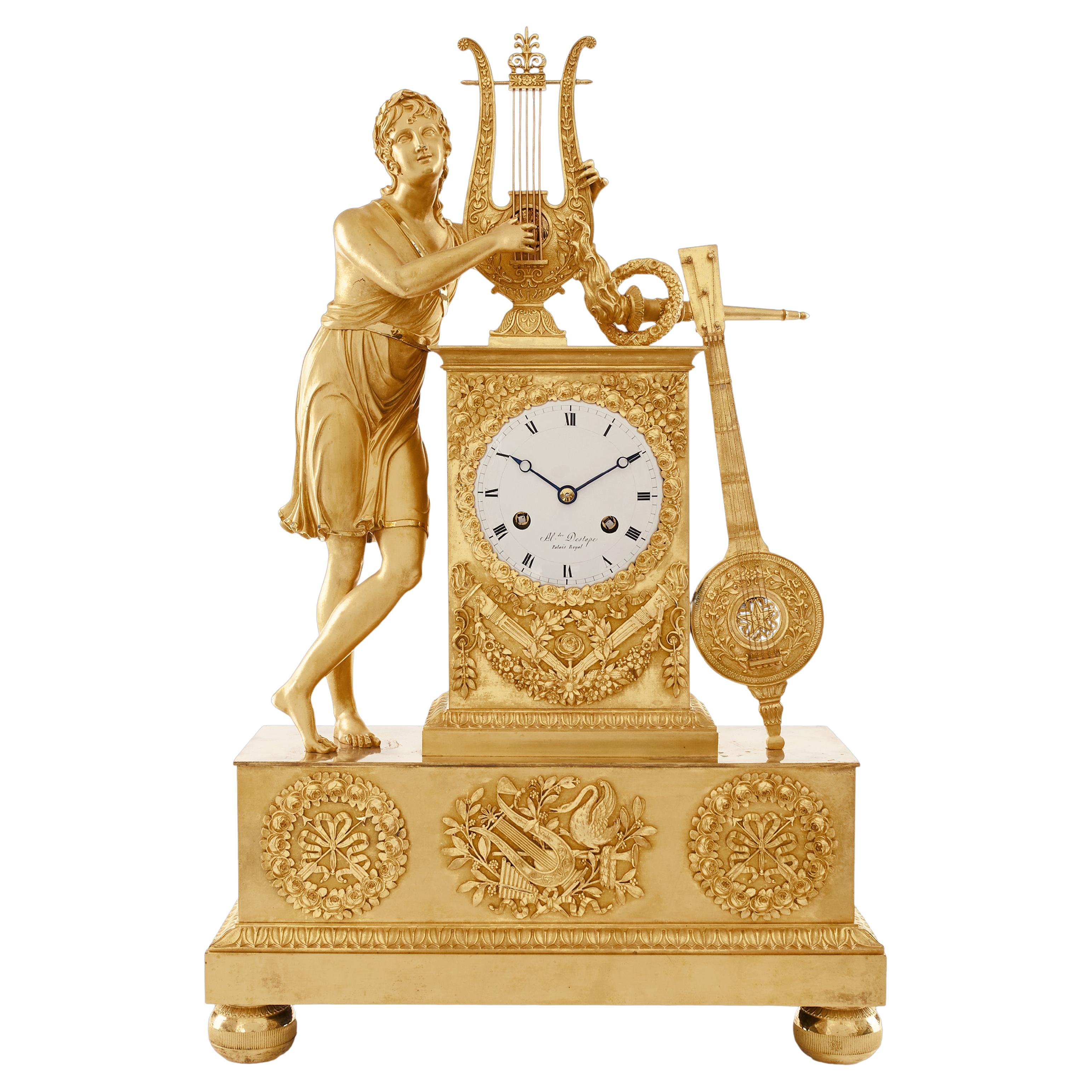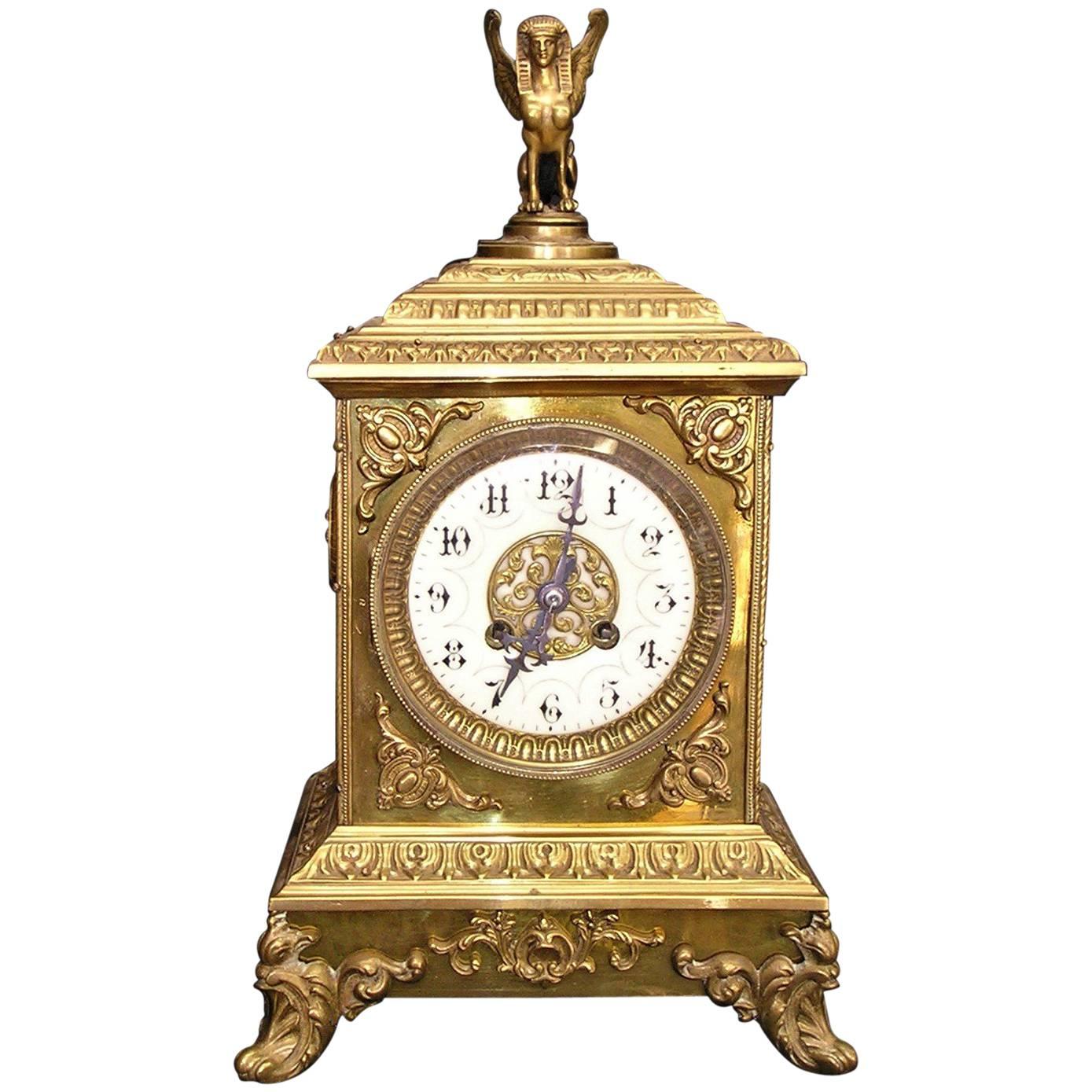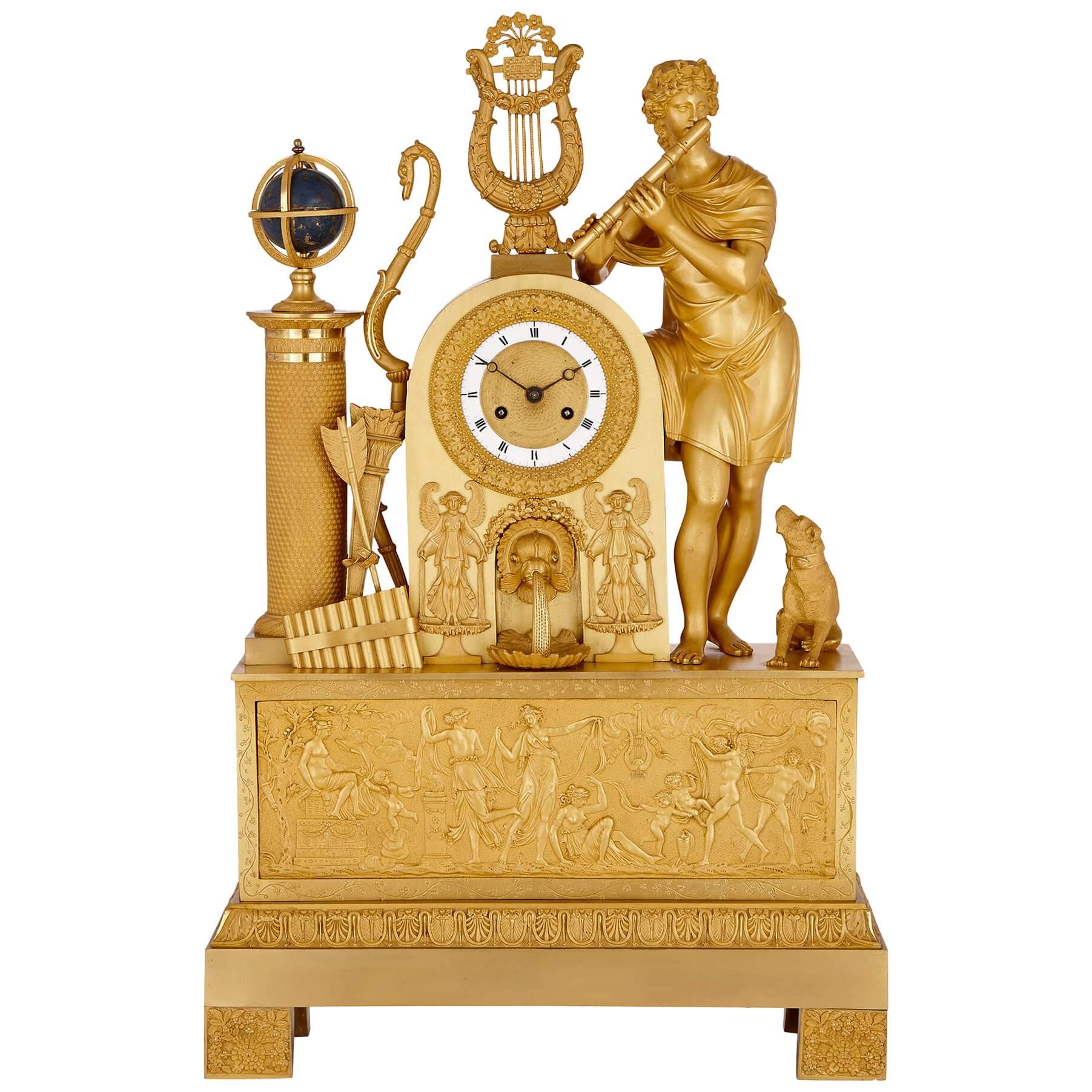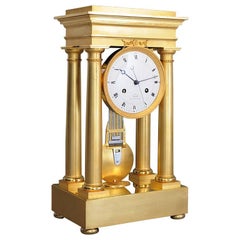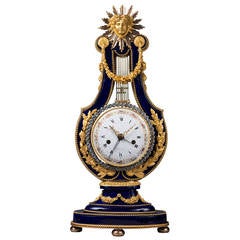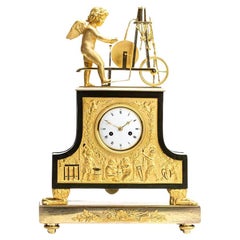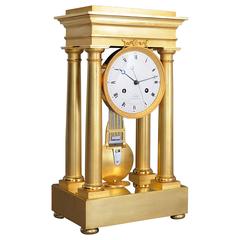
High Quality Early Empire Four Pillar Mantel Clock by Dieudonné Kinable
View Similar Items
1 of 6
High Quality Early Empire Four Pillar Mantel Clock by Dieudonné Kinable
About the Item
- Creator:Dieudonné Kinable (Maker)
- Dimensions:Height: 20.08 in (51 cm)Width: 11.23 in (28.5 cm)Depth: 7.49 in (19 cm)
- Style:Empire (Of the Period)
- Materials and Techniques:
- Place of Origin:
- Period:
- Date of Manufacture:1800
- Condition:
- Seller Location:Amsterdam, NL
- Reference Number:1stDibs: LU99456122803
You May Also Like
- Empire four pillar mantel clock by Dieudonné KinableBy Dieudonné KinableLocated in HAARLEM, NLAn extremely high quality early Empire four pillar table precision regulator mantel clock. This hight quality clock is made by the famous clock maker Dieudonné Kinable, circa 1800. Q...Category
Antique Early 1800s French Mantel Clocks
MaterialsBronze
- Sèvres Porcelain Louis XVI Lyre Mantel Clock by Kinable, Dial by DubuissonBy Dieudonné Kinable, DubuissonLocated in Paris, FRDieudonné Kinable Enamel Dial Attributed to Dubuisson (1731-1815) Exceptional Porcelain Lyre Mantel Clock from the Royal Sèvres Porcelain Manufactory Paris, late Louis XVI period, circa 1785-1790 Height 62 cm; width 26 cm; depth 16 cm The round enamel dial, signed “Kinable”, indicates the hours in Roman numerals, the fifteen-minute intervals in Arabic numerals, the annual calendar and the signs of the Zodiac, by means of four hands, two of which are made of pierced gilt bronze, the two others in blued steel. The magnificent lyre-shaped case is made of “bleu nouveau” Sèvres porcelain and finely chased and gilt bronze. The bezel is made up of a gilt bronze twisted rope; the pendulum is adorned with brilliant-cut paste stones; the body of the lyre is adorned with gilt bronze beading and with laurel leaf and seed motifs, with two rosettes issuing floral and foliate swags. The clock is surmounted by a mask with radiating sunrays. The spreading foot is decorated with beading and twisted rope motifs and a leafy garland. The en-suite decorated oval base is raised upon four flattened ball feet. The Royal Sèvres Porcelain Factory produced the lyre clock model as of 1785. Four colours were offered: turquoise, green, pink and bleu nouveau. These exceptional clocks were made for the connoisseurs of the time. Louis XVI had a similar clock in his Salon des jeux in Versailles; its dial bore the signature of the clockmaker Courieult (this is almost certainly the example illustrated in P. Verlet, Les bronzes dorés français du XVIIIe siècle, Paris, 1999, p. 41). Kinable, however, was the clockmaker who purchased the greatest number of lyre cases from the factory, and he developed the model in the late 18th century. Among the porcelain lyre clocks signed by this brilliant horologer, one example is in the Victoria & Albert Museum in London (illustrated in H. Ottomeyer and P. Pröschel, Vergoldete Bronzen, Band I, Munich, 1986, p. 252, fig. 4.6.26). A second such clock is in the Royal British Collection (see C. Jagger, Royal Clocks, The British Monarchy & its Timekeepers 1300-1900, 1983, p. 130, fig. 176). Bibliography: M. Gay and A. Lemaire, “Les pendules lyre”, in Bulletin de l’Association nationale des Collectionneurs et Amateurs d’Horlogerie ancienne, Winter 1993, n° 68, p. 5-40. Dieudonné Kinable (active circa 1785-1810) One of the most important Parisian clockmakers of the late 18th century. His shop was located at n° 131 Palais Royal. He purchased a great number of lyre-type porcelain clock cases...Category
Antique 1780s French Louis XVI Mantel Clocks
MaterialsBronze
Price Upon RequestFree Shipping - Empire mantel clockBy Pierre-Philippe ThomireLocated in HAARLEM, NLA Bronze mercury fire gilded empire romantic mantel clock. Attributed to the famous workshop of Thomire a Paris. You see an angel working as a blacksmith sharpening his arrows of lov...Category
Antique Early 19th Century French Mantel Clocks
MaterialsBronze
$19,221 - French 'Empire' library mantel clockLocated in HAARLEM, NLA charming Library Empire mantel clock. The Cupido reading the book is a very desirable subject. Even now a good decoration in almost every interior . The striking count wheel 8-day...Category
Antique 19th Century French Empire Mantel Clocks
MaterialsBronze
- French Empire Ormolu Mantel ClockLocated in Norwich, GBOrmolu French Empire clock, drumhead case with applied frieze decoration to the base, standing on turned and engraved feet. Superb engine turned dial centre, the gilded dial with Roman numerals, original hands and floral cast bezel surround. Convex glass to the rear supporting the eight day movement with outside countwheel striking and silk suspension. The whole surmounted by a gilded winged...Category
Antique 19th Century French Empire Mantel Clocks
MaterialsOrmolu
- French Empire Ormolu Mantel ClockLocated in Norwich, GBFrench Empire Ormolu mantel clock resting on four turned feet supporting an oval base with raised garland and zig-zag rope decoration...Category
Antique Early 1800s French Empire Mantel Clocks
MaterialsOrmolu
Recently Viewed
View AllMore Ways To Browse
Antique Table Knife
Pillar Clock
Clocks With Pillars
Antique Pillar Clock
Knife Edge Table
Office Knife Antique
Regulator Clock Antique
Antique Regulator Clock Antique Clocks
Antique Clocks Regulator
Regulator Antique Clock
Antique Regulator Clock
Antique Regulator Clocks Clocks
Antique Regulator Clocks
Regulator A Clock Antique
Empire Suspension
Second Empire Clock
Bell High Table
Quarter Mantel Clock
